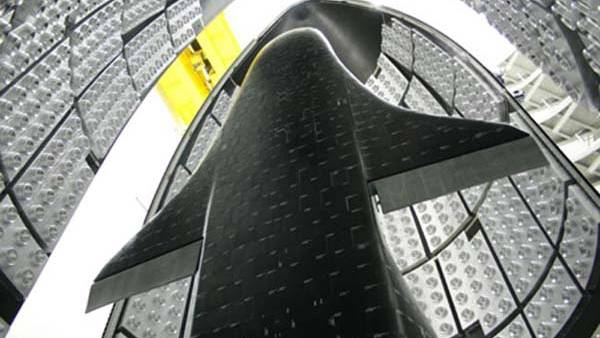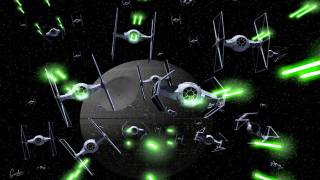Secret X-37B Space Plane Spotted by Amateur Skywatchers
Source: space.com
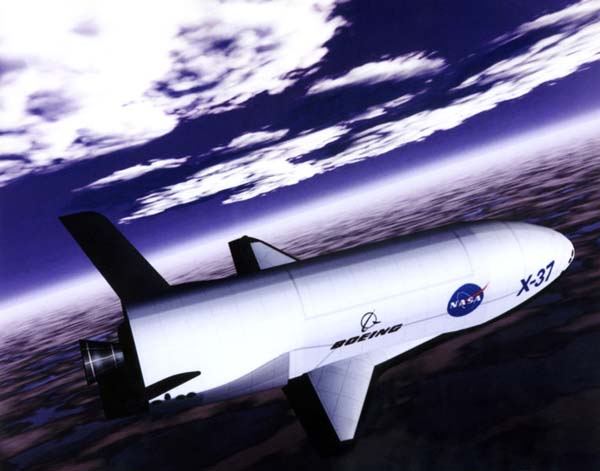
While the U.S. Air Force is mum about the orbital whereabouts of its X-37B mini-space plane, a dedicated band of amateur skywatchers has got its cross-hairs on the spacecraft.
The unpiloted X-37B Orbital Test Vehicle 1 was lofted on April 22 atop an Atlas launcher. It is being flown under the auspices of the U.S. Air Force Rapid Capabilities Office.
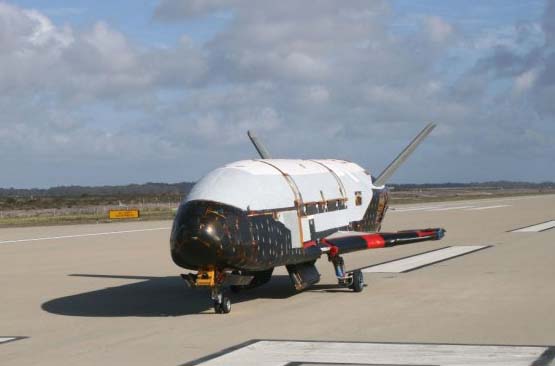
The X-37B space plane prototype is seen on a runway during flight tests in this undated photo released by the U.S. Air Force. Credit: USAF.
In U.S. military tracking parlance, when the space plane reached orbit it became identified as Catalog Number 36514, 2010-015A, OTV-1 (USA 212).
[Video: X-37B space plane spotted.] [Better resolution video]
Video from: YouTube.com
From there it entered a cone of silence regarding any on-orbit duties.
But thanks to a worldwide eyes-on-the-sky network of amateurs, the spacecraft is reportedly in a 39.99 degrees inclination, circling the Earth in an orbit 401 kilometers by 422 kilometers. This data may change slightly as the vehicle’s orbit is better refined, said Greg Roberts of Cape Town, South Africa, a pioneer in using telescopic video cameras to track spacecraft, chalking up exceptional results over the years.
The Air Force has not said what the robotic ship is for, but analysts say the X-37B is likely a spy craft and almost surely not a weapon.
[X-37B spacecraft photos.]
Absolute confidence
Roberts said that those sighting the craft have "absolute confidence" in their observations, claiming no chance of it being anything else. "The fact that we have now seen it several times confirms that the orbit we have is very close to the real orbit -- perhaps an error of a few kilometers or so at most," he told SPACE.com.
"One of our North American members got a brief view of what was suspected to be the space plane under somewhat difficult circumstances before it was no longer visible in the evening sky from the United States," Roberts said.
That single observation was not enough to define the spacecraft’s inclination as the skywatcher used binoculars, Roberts added. Video observers of the sky get "traces" when they record the object of interest, he continued, so it’s possible to determine the angle of travel and hence an idea of the inclination.
Roberts said the space plane has been observed over the last week by several members and its orbit is properly tied down. "We now face a spell of a week to two weeks when there will be no optical visibility until it becomes a morning object in the southern hemisphere and an evening object in the northern hemisphere."
The degree of difficulty in finding the X-37B has been a product of not knowing its inclination and having limited optical visibility due to its low orbiting altitude. Amateur astronomers learn how to spot satellites by tracking spacecraft orbits and finding when they may fly over viewing areas on the ground.
"This means it spends most of its time in Earth’s shadow during a pass," Roberts said. Also the ship’s low inclination and altitude has meant that tracking has only been possible from mid-latitude, ruling out observations by some of the members of the team unless they are in position at very low elevations.
According to Ted Molczan, a leader in the satellite sleuthing business based in Toronto, the X-37B search was moderately challenging.
"It was the first launch of its kind, so we had only a rough idea of its altitude, inclination and plane. Its low altitude and inclination put it out of reach of several of our most skilled observers," he told SPACE.com.
Molczan said his role was estimating the range of possible orbits in which the space plane might be found, which was the basis for the searches.
"The object is moderately bright. Based on the limited tracking so far, I estimate that it will reach about magnitude 2.5 when observed at high elevation above the horizon, and well illuminated by the sun. That is similar to the brightest stars of the Big Dipper," Molczan said.
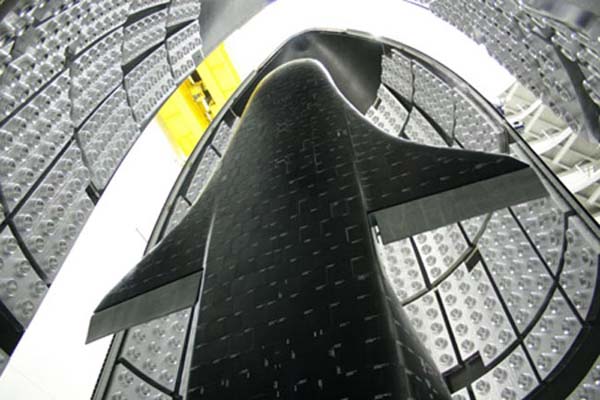
A belly view of the U.S. Air Force’s X-37B Orbital Test Vehicle as it sits inside its payload fairing during encapsulation at the Astrotech facility in Titusville, Fla., before its planned April 2010 launch. Credit: USAF
Nighttime fixation
What’s behind the nighttime fixation on the X-37B?
"Well the challenge is finding it without much data to go on," Roberts responded. "If the data were freely available we would probably not have bothered with it. I see little sense in tracking objects for which data is freely available. It’s like re-inventing the wheel. So as long as there are missions with little or no information, I personally will be interested in the challenge of finding them."
Roberts said that the sky watching group has a pretty good record. "If memory is correct, we have found and are tracking every single object launched in the past five years or more. The only objects we are not able to track are those stationed over areas of the earth where we have no active observers…mainly the central Pacific Ocean area."
Next up on the Roberts "to-do" list is attempting to see if the space plane is emitting any radio signals on the frequency bands that he’s able to monitor.
"That is going to be an even bigger challenge," Roberts concluded, "and I’m not really that keen on it as it’s like looking for a needle in a haystack!"
Mystery manifest
Still, even with the ground observations, exactly what’s tucked inside the X-37B’s cargo hold -- about the size of a pickup truck bed -- remains a mystery.
The X-37B signals a new way for the Air Force to conduct on-orbit experiments, said Gary Payton, Air Force deputy under secretary for space programs, during a pre-launch press briefing teleconference last month. "Actual on-orbit activities we do classify...for the experimental payloads that are on-orbit with the X-37," he noted.
Payton did indicate that there’s enough payload room on the mini-space shuttle to house a couple of small satellites in the range of a few hundred kilograms each. There is growing speculation that the vehicle is likely toting Earth spying gear for the National Reconnaissance Office.
The reusable X-37B Orbital Test Vehicle 1 was built by Boeing Phantom Works. It is about 29 feet (9 meters) long and has a wingspan of just over 14 feet (4 meters) across. It stands just over 9 1/2 feet (3 meters) tall and weighs nearly 11,000 pounds (about 5,000 kg).
Big test ahead
The OTV 1 mission is also designed to test new technologies and develop ways to make space access more routine, affordable and responsive. The OTV is the first vehicle since NASA’s shuttle orbiter capable of returning experiments to Earth for further inspection and analysis.
A second X-37B is now being fabricated for a test mission scheduled for 2011.
X-37B is being operated under the direction of Air Force Space Command’s 3rd Space Experimentation Squadron, a space control unit located at Schriever Air Force Base in Colorado.
Capable of orbiting Earth for up to 270 days, a big test for the X-37B is ahead: A "do-it-itself" guided entry and wheels down runway landing at Vandenberg Air Force Base in California, with Edwards Air Force Base as an alternate site.
If the incoming space plane strays off its auto-pilot trajectory over the Pacific Ocean, the craft is outfitted with a destruct mechanism.
Article from: Space.com
Video from: YouTube.com
